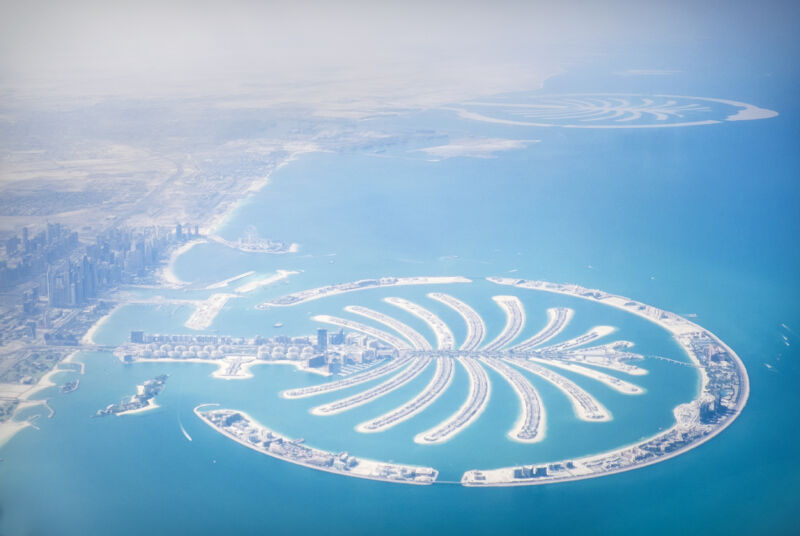

The coastline is at risk from rising seas, and we’re making more of it
source link: https://arstechnica.com/science/2023/02/humans-added-40-manhattans-worth-of-land-to-urban-coastlines/
Go to the source link to view the article. You can view the picture content, updated content and better typesetting reading experience. If the link is broken, please click the button below to view the snapshot at that time.
Making a splash —
The coastline is at risk from rising seas, and we’re making more of it
Satellite imagery shows how much urban coastlines have changed in 20 years.
Doug Johnson - 2/17/2023, 6:51 PM

Each year, humans add a little more land to their coastlines, slowly but surely encroaching on the sea and filling up smaller coastal bodies of water with new developments. This encroachment typically comes as we add luxury waterfronts and extend ports farther out to sea. In all, since 2000, coastlines around the world—specifically in urban areas—grew a whopping 2,530 square kilometers, according to a new paper.
A press release about the research notes that this is around 40 Manhattans, while the paper itself points out that this is roughly the size of Luxemburg. Neither source said this, but it’s also more than 4,000 Dollywoods.
The paper—which claims to be the “first global assessment of coastal land reclamation"—looked at how human development built land in, or filled parts of, coastal zones. This includes wetlands, which play various important roles like slowing erosion (but humans can just keep building out anyway, right?), protecting areas further inland from flooding and sea level rise, and acting as habitats for myriad species.
Eye in the sky
The team of researchers looked at satellite imagery taken between 2000 and 2020 from 135 large coastal cities—i.e., 1 million people or more—around the globe. Of this number, 106 sites saw an increase in coastline landmass.
This process was most common in the Global South, particularly among growing economies. Cities from three countries—China, Indonesia, and the United Arab Emirates—led the pack in terms of these developments. Shanghai, for instance, added around 350 square kilometers, compared to Los Angeles—the only United States city that made noticeable increases—which grew at 0.29 square kilometers over the 20-year period.
AdvertisementThe most common type of development was port extensions, which were seen in 70 cities. This is followed by residential and/or commercial developments, which showed up in 30 cities. In the press release, physical geographer at the University of Southampton and lead author of the paper Dhritiraj Sengupta said that much of these changes were driven by an increased need for space in urban areas. However, cities also pursued some of these developments—like the islands in Dubai arranged to look like a palm tree from above—for prestige.
Not just sitting on the dock of the bay
These developments come with some associated costs, however. The paper notes that around 70 percent of the expansions happened in low-lying regions that could be susceptible to sea level rise. Some places compensate by building sea walls or other structures designed to protect against sea level rise and flooding. For instance, around 14 percent of shores in the US are estimated to be protected by such structures. But these builds can also impact nearby natural ecosystems, such as by blocking species migration. Further, as Ars reported previously, sea walls could end up pushing water from flooding to other parts of the coast.
The paper also notes that, in some cases, coastal growth comes with an increase in pollution entering the sea. In the case of the Indonesian city Jakarta, this can include trash and various contaminants being swept into the coastal waters. This, in turn, can harm nearby ecosystems, resulting in industries like tourism and fishing taking a hit.
The paper only looks at specific, though highly populated, parts of the world’s coastline—a small fraction of Earth’s estimated total of some 620,000 kilometers of coastline. Around 2.4 billion people live within 100 kilometers of that area. But, by some counts, only 15 percent of the world’s coasts exist in their natural states. So, it’s difficult to say that the less populated shores aren’t also seeing some unexpected changes.
AGU, 2023. DOI: doi.org/10.1029/2022EF002927 (About DOIs)
Recommend
About Joyk
Aggregate valuable and interesting links.
Joyk means Joy of geeK